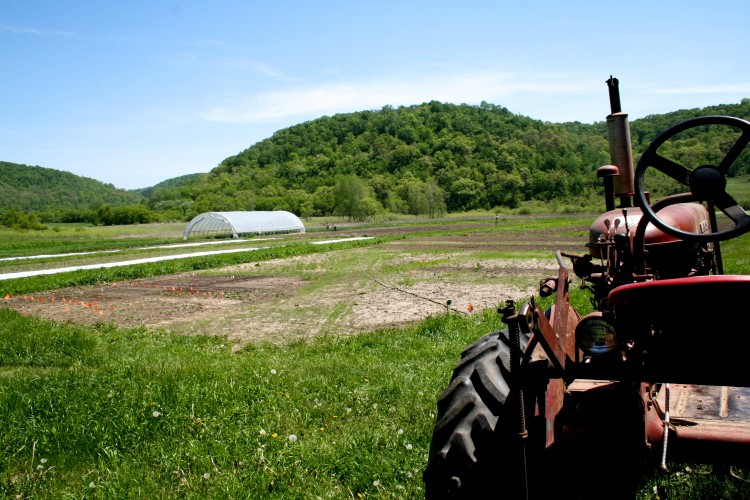Liz Lane lights up when I ask her about her seeds. Every year she selects some old reliables and a few new heirloom varieties to try. She is one of my research informants but also my farmer—her vegetables and assorted odd heirloom melons supply my table. Liz and her husband, Mike, farm in southwestern Wisconsin, under the community-supported agriculture (CSA) model. In this model, consumers like me pay a fixed annual sum for a season of organic produce from a local farm. Farmers receive their subscription money in the spring when they most need cash for seed and other supplies. In turn, consumers are invited to work on the farm, to attend harvest parties, and in general to feel connected to the people who produce their food.
Liz and Mike, who are in their early sixties, left their 9-to-5 jobs twenty years ago to purchase their 5-acre farm, where, in addition to growing vegetables, they raise goats and chickens and rent nearby acreage to produce organic feed. They came to organic farming out of deep sense of alienation with the working world, a desire to make a life for their family based in creative work and meaningful community, and a concern for the environment.
This vision of organic farming as an antidote to social and economic alienation is common to many of the farmers who I’ve studied in the course of research in southwestern Wisconsin. They see farming, to use Hannah Arendt’s distinction, as work rather than labor. Arendt sees labor as always inherently alienated, yoked to and in service of a totalitarian political industrial system, and by definition creative of nothing but consumption. In contrast, work is the expression of a creative and vital link to the world, an agentive and purposeful act that results in production. Out of work, it would be possible to create real agency, meaningful politics, and new worlds.

Notwithstanding their work, over the years the Lanes have become alienated anew. None of their neighbors are organic farmers. In fact, one family has converted their dairy into a concentrated animal feeding operation where a thousand cows now produce enough manure to pollute the groundwater feeding the Lanes’ well. Another farmer destroyed their entire spring pea crop when he sprayed roundup on a windy day, allowing it to drift over the hedgerow separating the two farms and to land on the maturing peas. While producers like the Lanes take up farming because they desire a certain kind of world, and through their work to make it, the structures of rural society don’t encourage it. Moreover, mortgage payments, health care premiums, taxes, and other costs put heavy earning pressure on the farm.
This requires them to redouble their efforts marketing vegetables through their CSA to attract ever more consumers. Consumers are attracted to CSAs partly out of a desire to find connection and community through the CSA relationship. The cheerful newsletters, recipes, and farm tours necessary to make CSA customers feel connected to their farmers are hard to orchestrate given the dawn-to-daylight routine required to maintain an organic farm. The couple notes that visiting consumers who come to work and play on the farm are pleasant enough, but despite such activities, real community—bonds of mutual obligation and friendship—are seldom forged. While the Lanes certainly value their customers, they have come to see the activities surrounding the CSA—the weeding parties, pumpkin festivals, and soap-making demonstrations—as so much labor. And for the Lanes, when organic farming becomes just a means to put another product on the market, it loses its meaning. Under what circumstances might it be possible to use the work of organic farming to forge new worlds?

Recently I visited Lafarge, WI, one of the most vital centers for the production of organic vegetables, milk, and meat in the country—and where I do research on organic farming and organic marketing cooperatives. My research is attached to my longstanding theoretical interests concerning environmental social movements and the relationship between alternative political visions and markets in alternative commodities like fair trade and organic foods. It is also attached to my personal dreams and aspirations of abandoning anthropology to become an organic farmer.
For sale was a 34-acre organic permaculture farm with a commercial kitchen that I hoped might somehow be my dream farm. Its sprawling turreted house had been conceived as a restaurant, living space, and homeschool. Its commercial oven and central heating system were wood-fired and supplied by the back 20 acres of forest. An acre of asparagus and a thousand hazelnut bushes—the latter valuable for its convertibility into biofuel—were perennial crops meant to be low maintenance, and that might generate $10,000 in income per year. A store complete with produce coolers was ready for customers. Chicken coops and barns promised housing for future animals. It was a homestead farm—meant to provide the means for self-sufficient rural livelihood.

This beautiful dream was still visible beneath the weeds choking the asparagus, the caved floor of the chicken coop, the house half-finished, all subfloor and studs, the impossible thought of cutting, storing, and stacking enough wood to stoke fires all the Wisconsin winter. Homesteaders in western Wisconsin and elsewhere dream of self-sufficiency for various reasons, including the threat of climate change and the end of fossil fuel availability, the poisoned food system, the numbing drudgery of wage labor, and more positively, the overwhelming desire for creative and fulfilling work that is fully integrated into a joyful life. But small organic farms or homesteads—like the one I looked at—have an extremely high failure rate. The dream—which I would characterize as a desire to live as self-sufficiently as possible with only a marginal connection to the formal labor force or to the market—is very seldom achieved. In practice, small farms depend on wages, pensions, and health benefits from at least one family member.
The Facebook page Small Farm, Sustainability, and Homestead Living illustrates some of these realities. In a recent thread, a member asked, “How many of you out there need to earn some kind of outside income to maintain your farm?” In the hundreds of replies came a list of jobs, pensions, and disability payments that supplemented farm income. Members floated various estimates—ranging from $5,000 to $10,000—of the annual income needed for taxes, mortgage payments, health care premiums, veterinary bills, animal feed, and other expenses that would have to be met even by homesteaders who could produce virtually all of their own food, do all of their own building and repair, and successfully sell surplus production. Small enterprises like these are the bread and butter of farmers markets around the country, where on average a farmer will make about $5,000 per year selling vegetables and other farm products.
The alternative to this marginal existence is to scale up—to transform the homestead farm into an enterprise dependent on wage labor and fully integrated into high-end markets. Jan and Nathan Dermott of Summit Acres Farm decided that in order to be able to quit their day jobs, they would have to scale up. They expanded their operation from 5 acres to 30, and unable themselves to provide all the necessary labor, hired several dozen laborers and a manager to oversee them.
Sweet Water Farm, which nearly went bankrupt after catastrophic flooding in 2008, scaled up in order to rebound. It recruits 30 H2A laborers from Mexico to staff their farm, which is now a multimillion-dollar enterprise. Scaled-up farms sell their produce to Whole Foods and Mariano’s in the Midwest and must meet rigorous production standards that entail considerable upfront capital investment. Blue Ridge Farm specializes in heirloom tomatoes and kale for Whole Foods. They hire teenaged laborers and outsource many tasks, such as seed starting, to Amish neighbors, who, according to Amy, the owner of Blue Ridge Farm, compel their children to stay up all night stoking the fire in the greenhouse when frost threatens.
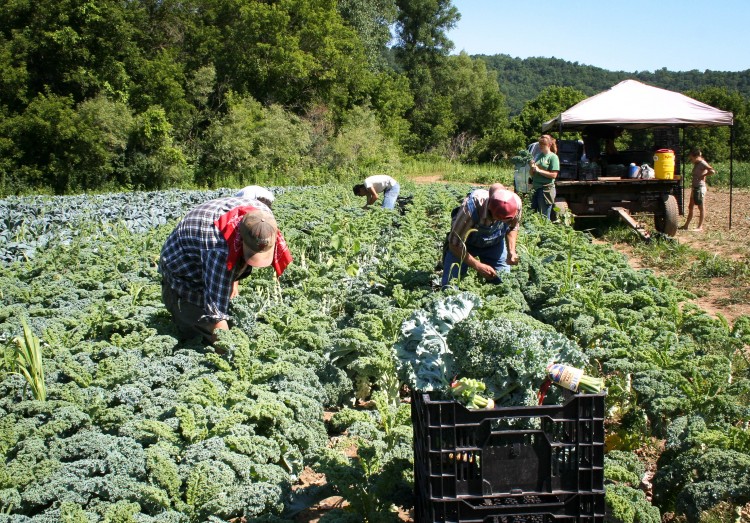
But not all vegetables at places like Whole Foods come from “scaled-up” farms. In and around LaFarge, a network of small organic vegetable farms supply restaurants in Madison, Milwaukee, Minneapolis, and Chicago, as well as Whole Foods through the Organic Valley label. In almost every case, vegetables from small farms are collected by aggregators, who resell them at a profit, and overwhelmingly these small farms are Amish. A manager from Organic Valley estimated that 99 percent of the vegetables sold under the Organic Valley label are produced by Amish farmers.
Thus, organic vegetables must be produced either at an industrial scale with wage labor or, in the case of small homesteads both non-Amish and Amish, by undervalued, unpaid, or family labor; otherwise the farm essentially produces at a loss insofar as it is subsidized by wage labor income on the homestead. This is not unlike the agricultural production system in southern Mexico, where I have studied organic fair trade coffee production.
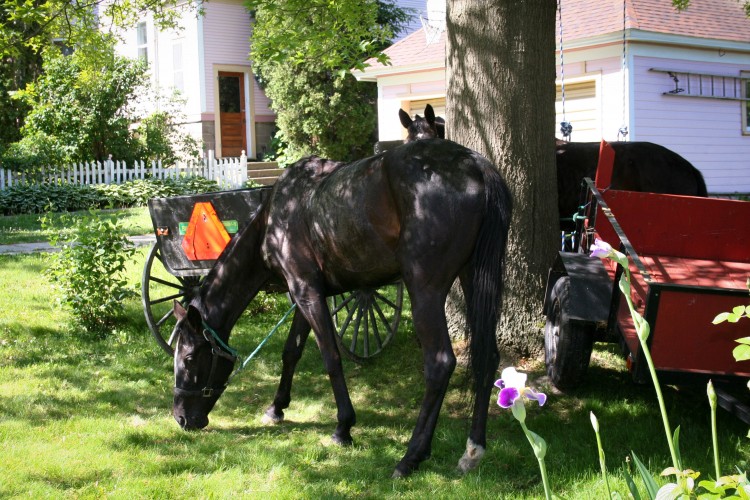
Organic coffee is produced by family laborers in a peasant commodity production system that has its roots in colonial economic arrangements. In the Accumulation of Capital, Rosa Luxemburg argued that the expansion of capital into noncapitalist frontiers, such as peasant communities, was fundamental to the smooth functioning of capitalist markets. Indigenous peasant communities were granted communal land rights—which they still retain where I work in Chiapas—that allowed them to produce a great deal of their own subsistence.
However, policies of taxation, and the necessity of obtaining some goods through the market, required participation in labor markets. Historically, indigenous people provided seasonal labor on coffee plantations, and when their labor was not needed, they were sent home to live off the land. Thus their ability to self-provision essentially reduced overall wage costs for employers who were not responsible for the entire cost of the reproduction of the labor force, and in turn their inability to entirely self-provision forced them to participate in as laborers and consumers. Contemporary fair trade coffee producers subsidize our drinks by self-provisioning, by using unpaid family labor, and by taking on quality control responsibilities that used to be done by coffee buyers. Thus, accumulation of capital requires taking something for nothing, just as Luxemburg argued. David Harvey has coined the term accumulation by dispossession to capture this.
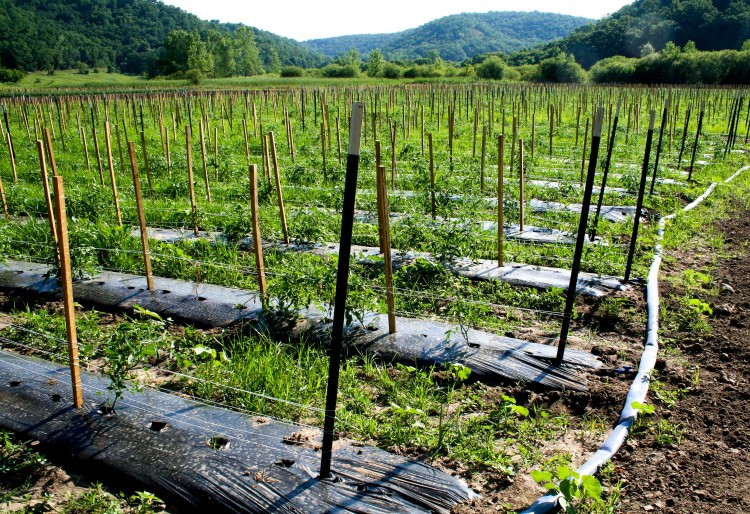
In Luxemburg’s work, preindustrial or noncapitalist forms of labor are an essential component of the capitalist system, providing a constant source of value, food as it were, to be metabolized. Amish farmers in Wisconsin are an essential source of labor-starting seeds and transplanting seedlings, providing day labor, growing vegetables. In all these activities, they reduce costs for capital-intensive farms and provide reasonably priced vegetables to market. Like Mexican coffee growers, they self-provision, but they also need cash—to buy property, pay taxes, buy various supplies.
The dream of the farm is of work, not simply labor that reproduces a dead consumer society. The small farmers in my research sample demonstrate a huge discomfort with the market, both the labor and the consumption it requires. And yet there is no alternative. In a society like ours, no one can live outside the market. Visions for social change are stymied by it, and fair trade and organic foods do not themselves generate alternative worlds. Like all other commodities, they are products of labor.
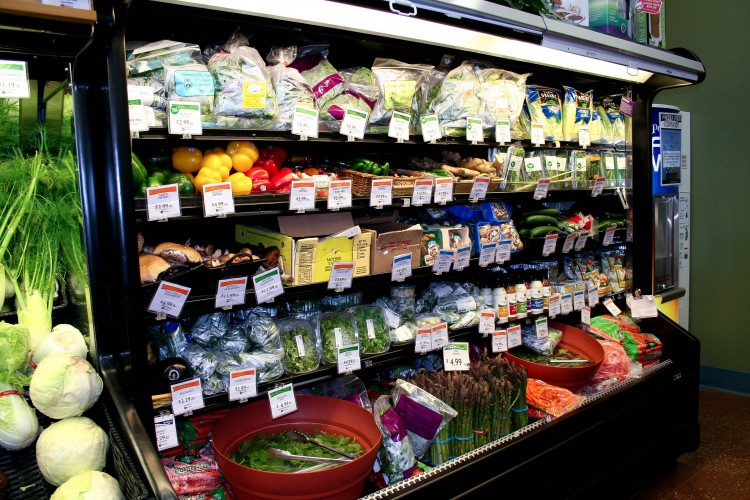
Value accumulation is firmly attached not only to the consumption of those products but also to the ideas attached to them. When CSA farmers host harvest festivals and pumpkin parties, they associate their agricultural products with ideas about authenticity, community, and wholesome foods. As small farmers know, and as Paige West has shown in her work on coffee produced in New Guinea, those images and ideas are themselves products of labor. The dream of the farm, however, rejects the idea of labor and its cycle of endless production for the sake of endless consumption. It recalls Arendt’s notion of work. She sees work as the foundation of real agency, both personal and political. Work is both the outcome of and generative of agency, and collective agency is the precondition for any kind of liberatory politics. But in itself work is not sufficient to create alternative politics. We actually need alternative politics, and that requires work.
Dr. Molly Doane is Associate Professor of Anthropology and Affiliated Associate Professor of Latin American and Latino Studies at the University of Illinois at Chicago. Her research concerns environmental politics, alternative markets, and social movements in Mexico and the United States. Her book Stealing Shining Rivers: Agrarian Conflict, Market Logic, and Conservation in a Mexican Forest won a 2012 “best book” from the Latin American Studies Association. Her research has been supported by the National Science Foundation and the Wenner-Gren Foundation for Anthropological Research. She is co-editor of the book series Critical Green Engagements: Investigating the Green Economy and Its Alternatives, published by the University of Arizona Press.
All photos in this post are credited to the author.
References
Arendt, Hannah. 1998. The Human Condition. 2nd ed. Chicago: University of Chicago Press.
Doane, Molly. 2014. “Politics on the Family Farm.” Anthropology Now 6, no. 3: 46–53.
Doane, Molly. 2010. “Relationship Coffees: Structure and Agency in the Marketplace.” Pp. 229–257 in Fair Trade and Social Justice: Global Ethnographies, ed. Sarah Lyon and Mark Moberg. New York: New York University Press.
Luxemburg, Rosa. (1913) 1951. The Accumulation of Capital. New York: Routledge and Kegan.
Harvey, David. 2006. Spaces of Global Capitalism: A Theory of Uneven Development. New York: Verso.
West, Paige. 2012. From Modern Production to Imagined Primitive: The Social World of Coffee from Papua New Guinea. Durham, NC: Duke University Press.
Cite as: Doane, Molly. 2015. “Working Dreams: Organic Farming in the Midwest and Mexico.” EnviroSociety. 12 November. www.envirosociety.org/2015/11/working-dreams-organic-farming-in-the-midwest-and-mexico.

